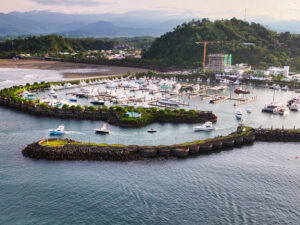
There aren’t always opportunities for recreational anglers to participate in fisheries research. But when help is requested, we ought to be willing to participate. Just such a request has been issued by the North Carolina Division of Marine Fisheries. They want some additional biological information to help with their stock assessment for flounder.
In order to get this information, they want to examine the carcasses of recreationally-caught flounder. The data they interested in obtaining is the size of the fish, its sex and its age. Age can be determined by removing the otolith, or “ear bone,” and examining it under a microscope. (Otoliths have growth rings much like trees, and can tell scientists how old the fish it was attached to is.) They are looking for legal size fish of 15 inches and up.
For those who would like to have something to hang on the wall after enjoying a meal or two of fresh flounder, the state has two levels of certificates which will be issued to participants who submit a carcass and fill out the collection catch card. An Angler Recognition Certificate (one per season) is issued for fish 15 to 24 inches, or a N.C. Saltwater Fishing Tournament Citation (one per fish for fish 24 inches or greater total length).
All of the freezer locations for dropping off the carcasses and filling out the needed information are listed below. It is requested that the carcass be left intact and with the guts in place. The program will end on the last day of this year’s flounder season which is one minute before midnight on September 30.
Conservation Controversy
Well this seems like a pretty straight forward request, but believe it or not, it seems to have some controversy associated with it. Having spent a total of 28 years participating in fisheries management, I think that I know what a few folks are grousing about.
Flounder have been controversial since the early days of their management. The problem, IMHO, stems from the original allocation. It was based on a number of years when the recreational catch was relatively low, because the bluefish population was very high and much of the recreational catch effort was directed there.
To some, this was fisheries managers catering to commercial interests. The reality is that allocations are always problematic and the recreational catch was determined using unfavorable years. So, we started out behind the eight ball. The stock went through a rebuilding process that was very successful and brought back a lot of recreational fishing participation. As the stock was rebuilding, the recreational quota was exceeded time and again.
Even though the stock was rebuilding and more fish were available than folks had seen for years, catch restrictions kept getting tightened. This type of scenario happens as stocks rebuild. But those who tend to see conspiracy theories behind almost every decision continued to promote the idea that managers were out to get recreational anglers.
In some quarters, the reaction to this request for angler help is seen as a way for the fisheries managers to get fisheries data that will be used only to restrict recreational participants. That couldn’t be farther from the truth.
Bad Science Leads to Bad Decisions
Again, going back to my fisheries management days, I can unequivocally say that bad decisions, which may or may not negatively impact users, are more often made with bad scientific data. Does that mean that good science will always have beneficial impacts on quotas? Heck, no! But if folks are interested in the long-term health of their target stocks, good science is the best way to get there.
Managers do not always make decisions that all users accept or appreciate. With many decisions it is likely that there will be a negative impact to one user group or the other. But if we want to have strong fish resources in the future, we need mangers to make them.
Donation Sites
The North Carolina Division of Marine Fisheries has set up eight temporary freezer locations, in addition to the 10 carcass collection locations available throughout the year, where recreational fishermen can take their flounder carcasses. Instructions on how to deposit the carcasses are posted on each freezer. Anglers will be asked to give information related to how and when the fish was caught and must provide their names and addresses if they wish to receive a certificate or citation.
Temporary Locations:
- Oden’s Dock: 57878 North Carolina Hwy 12, Hatteras
- Bridge Tender Marina: 1418 Airlie Rd, Wilmington
- NC Division of Marine Fisheries: 943 Washington Square Mall Highway 17, Washington
- Sea Gate Marina: 729 Sea Gate Dr, Newport
- Chasin’ Tails Outdoors: 709 Atlantic Beach Causeway, Atlantic Beach
- Ocean Isle Marina: 2000 Sommersett Rd SW, Ocean Isle Beach
- Seapath Yacht Club: 330 Causeway Dr, Wrightsville Beach
- Dudley’s Marina: 106 Cedar Point Blvd #8000, Cedar Point
Year-Round Sites:
- Cape Pointe Marina, 1390 Island Road, Harkers Island
- Frisco Rod & Gun, PO Box 10, Frisco
- Jennette’s Pier, 7223 South Virginia Dare Trail, Nags Head
- Pogies Fishing & Kayaking Center, 114 E Corbett Avenue, Swansboro
- Pelagic Hunter Fishing Center, 104 James St, Sneads Ferry
- Sea View Crab Company, Wilmington
- Tex’s Tackle, 215 Old Esatwood Road, Wilmington
- NC Division of Marine Fisheries Headquarters, 3441 Arendell Street, Morehead City
- NC Division of Marine Fisheries, 127 Cardinal Drive Extension, Wilmington
- Marine Corps Air Station Cherry Point—Environmental Affairs Office, PSC Box 8006, Cherry Point (available only to those with military base access)









